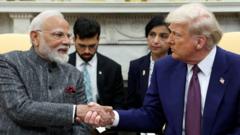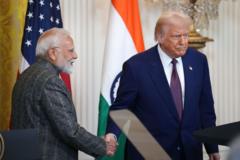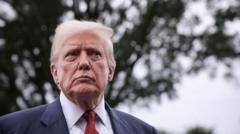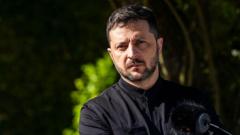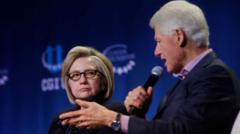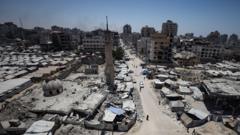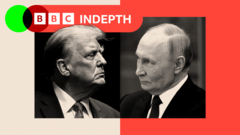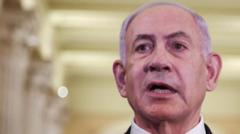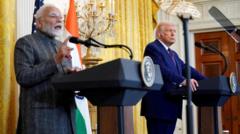An analysis by BBC Verify indicates that Russian aerial attacks on Ukraine more than doubled following Donald Trump's inauguration in January, despite his calls for a ceasefire. Critics argue that his administration's pauses in military support to Ukraine may have emboldened Moscow, complicating efforts for peace.
Surge in Russian Attacks on Ukraine Coincides with Trump's Presidency Resumption
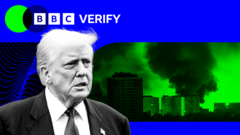
Surge in Russian Attacks on Ukraine Coincides with Trump's Presidency Resumption
In the months since Donald Trump reclaimed the presidency, Russian aerial assaults on Ukraine have skyrocketed, raising alarms over a potential escalation in conflict.
Since Donald Trump resumed the presidency in January, Russian attacks on Ukraine have significantly intensified, more than doubling the munitions fired compared to the latter half of Joe Biden's term. This trend has sparked ongoing debates concerning Trump's foreign policy, especially in relation to Russia.
According to BBC Verify, Russia launched over 27,000 drones and missiles against Ukraine from January to mid-July 2024, a stark increase from approximately 11,600 during the final six months of Biden's administration. Attacks began to rise under Biden but surged sharply following Trump's election victory in November 2023, reaching unprecedented levels during his current term.
Trump had pledged during his campaign that he could terminate the conflict in Ukraine in a single day if given the opportunity, attributing the war's continuation to Biden's perceived incompetence. Despite these optimistic assertions, critics have voiced concerns that his efforts at diplomacy have at times favored Russia, particularly following two instances where military aid to Ukraine was paused by his administration earlier in the year.
In March and July, the Trump administration halted the delivery of crucial military supplies, including air defense munitions, coinciding with a ramp-up in Russian missile production. Ukrainian intelligence reports indicate a doubling of ballistic missile construction by Russia over the past year, a situation exacerbated by Trump's policy changes.
While initial efforts from Trump’s administration seemed to have a temporary effect on the frequency of attacks, a resurgence began shortly thereafter, especially following US diplomatic efforts in February aimed at negotiating with Russian officials. Attacks peaked dramatically, with one day alone seeing nearly 750 strikes on Ukraine.
Despite occasional vocal frustrations from Trump regarding the escalating violence, it appears that Russia's military strategy remains unaffected as it continues to increase both the number and intensity of its assaults on Ukrainian cities. Furthermore, Trump has called for a peace agreement by August, underscoring the urgency of addressing the conflict.
Ukrainian officials and citizens echo renewed calls for increased military support. Senator Chris Coons asserted that Trump's perceived leniency toward Russia may have resulted in a more aggressive stance from the Kremlin, leading to tragic attacks on civilian infrastructure. Analysts have noted that diminished military provisions from the US to Ukraine could render its defenses notably weaker, aiding Moscow’s tactical initiatives.
Reports indicate that Russia is rapidly enhancing its production capabilities for drones and missiles, necessitating a stronger US commitment to providing necessary military support to Ukraine. Ukrainian morale is reportedly waning as the conflict drags on, emphasizing the pressing need for a sustained international response to prevent further escalation and seek a viable resolution to the ongoing war.


